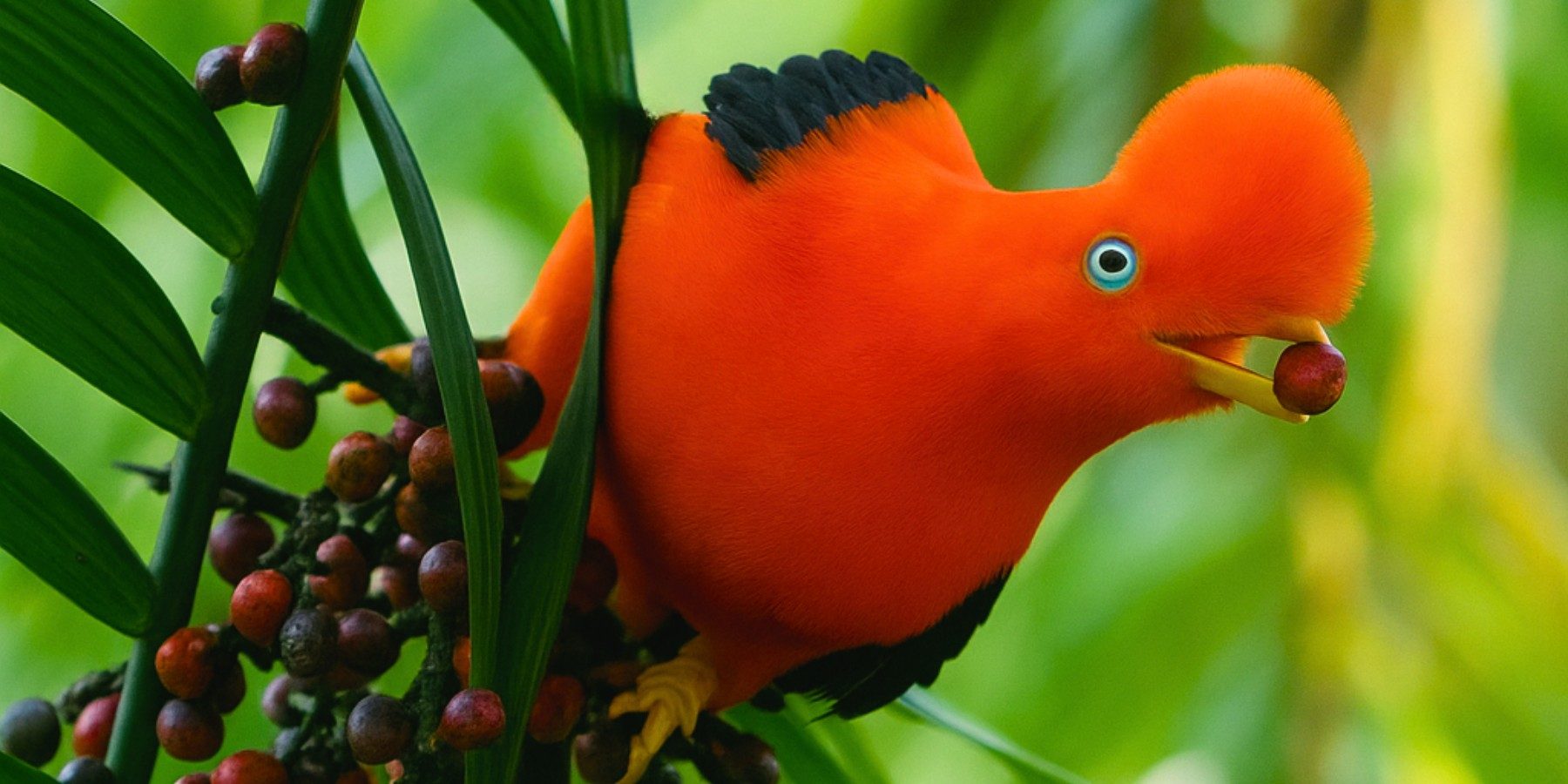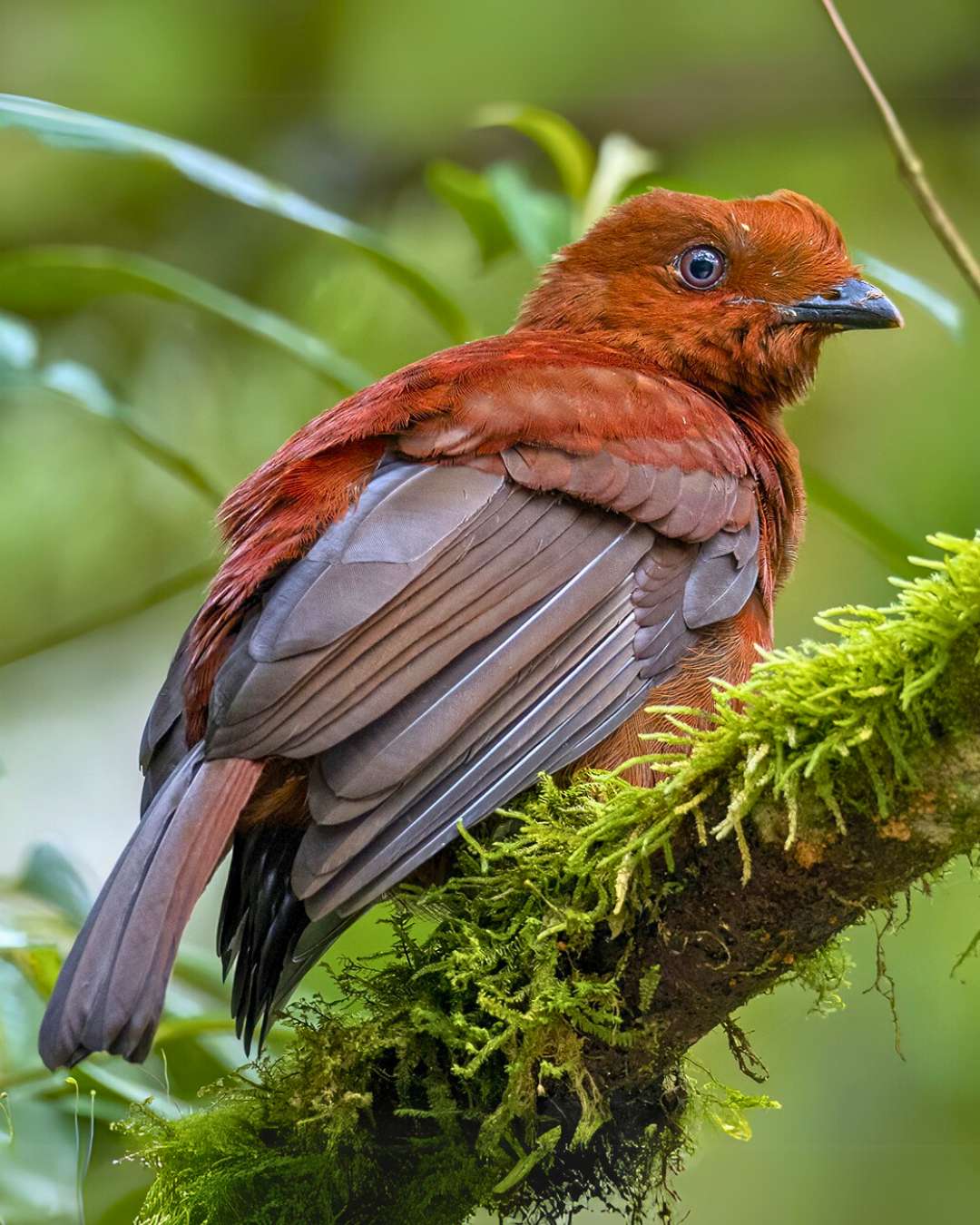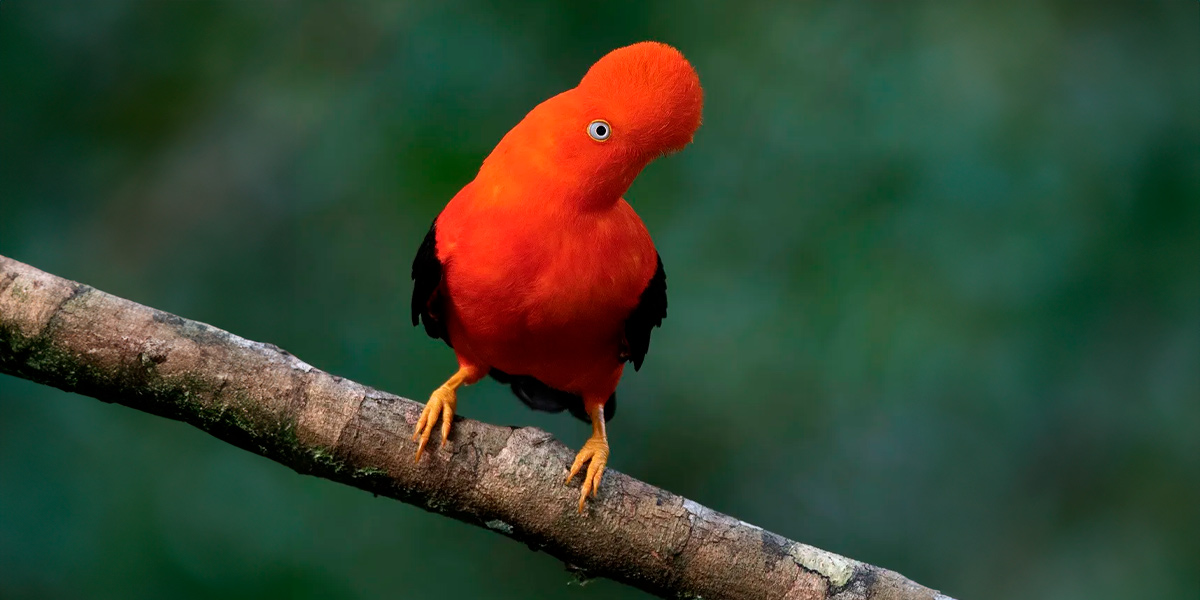The cock of the rocks or tunqui (Rupícola peruviana), notable for the incredible beauty of its plumage, is a species of passerine bird of the Cotingidae family that lives in the Amazon region of Peru.
According to Supreme Resolution 983 of the Ministry of Foreign Affairs, promulgated in the government of President Manuel Prado on December 11, 1941, the Peruvian rupicolous is the national bird of Peru. Due to its incomparable plumage and by many individual and collective manifestations, it is admired in the world as one of the most beautiful and delicate birds.
andean cock of the rock: Characteristics and Habitat
It is medium in size, about 35 centimeters. The male is a beautiful deep orange-red color, orange eyes, yellow legs and bill, with black wings and tails. The female is dark reddish brown.
In Peru it is found in protected areas such as the national parks of Río Abiseo, in San Martín; Yanachaga-Chemillén, in Pasco; Tingo María, in Huánuco; and Manu National Park, in Cusco - Madre de Dios.
Also in protection forests such as Alto Mayo, in San Martín; San Matías-San Carlos, in Pasco; and Pui-Pui, in Junín. Likewise, in the forests of San Ignacio, in the Cutervo National Park, in the historic sanctuary of Machu Picchu and other similar territories, along the eastern slope of the Andes.
They live in groups of 10 to 20 individuals. The cock-of-the-rocks lay their eggs in the indentations of the cliffs. It is very rare to find a solitary cockerel, as they always live in small communities.
They remain hidden for most of the day and only come out of the forest at certain times. He has been seen on the banks of rivers bathing and drinking water.
Feeding
The Peruvian cock of the rock feeds on a large quantity of wild fruits, which grow in large quantities in the mountain forest of the eastern Andean slopes.
Cock of the rocks are frugivores (they feed on fruits). This is a consequence of the fact that between 50% and 80% of the trees in the Amazon rainforest produce fruits as a propagation mechanism. In addition to its proven abundance, additional factors such as the availability and diversity of wild fruits will determine that it is possible to find fruits in any season or time of the year, although the quality of the food is not the same throughout the year.

Interesting Facts About the Cock of the rock Bird
- Many species throughout the vastness of the realm of nature, are known for a particular behavior or attitude, which can grant them grace, courage, strength, which is generally done for the purpose of conquering females for a mere purpose reproductive. According to studies carried out, this period of reproduction or mating begins in the month of October.
- Prefers to live in community, being faithful and loyal to only one partner (monogamy). Besides being known for his beauty, he is also highly famous and recognized for his talent and skills in dance.
- The courtship that the male performs before starting the act of mating for its reproduction, is a show worthy of being presented on any stage in the world and, whose entrance tickets are sold out in pre-sale. Its striking dance that begins with delicate jumps and producing attractive sounds, flaunting its striking plumage and indisputable beauty with elegant flaps, is the preamble or phase of conquest, and then begins the copulation phase, once one of the lucky spectators is attracted by what she considers the best dancer. As a complementary part of the dance, the excited roosters also emit high-frequency sounds or screeches that can be heard in the distance.
But the show doesn't end there. All the dancers who have not yet found a partner, continue to do their best in order to capture the attention of one of the females who is still in the audience, who at some point will decide which one to choose. Although, it does not necessarily have to be immediately, some are not impressed at first sight, therefore, this dance or process of selection of a partner by the female, can last a few days. - Hierarchy is something that is also present in these communities. There is a dominant male who takes over a circular perimeter of territory, in which he takes the central position while being surrounded by the others. This dominant condition gives him the privilege of being the first to mate with a female.
- Once the incubation time begins (42 days), the female is the only one in charge of the care of the egg and the subsequent rearing of the chick until they begin to give their first flight attempts and finally manage to do so.
- Generally, the fauna of South America, especially birds, are recognized worldwide for their particular beauty and color. It is not in vain that, unfortunately, a nefarious transnational business has developed from the illegal commercialization of a large number of species, despite government efforts to properly legislate on this matter.
- The cock of the rocks is a native bird of Peru, which over time has moved through the region in search of its natural habitat, which, as we have already seen, is mountainous forests. From this displacement, two species can be distinguished: the Andean and the Guiana.
- Both the Andean cock of the rock and the Guyanese come from mountainous areas of northern South America. The first, in areas of the Andean mountain range that goes from Venezuela to Bolivia; the second, in mountains located north of the Amazon River in regions belonging to Colombia, Venezuela (Bolívar and Guyanas state), and Brazil.
Reproduction
The sexual courtship of the rupicololes has a special meaning. The males gather in places called ‘cantaderos’ to perform a kind of dance and song contest. Staked in absolute orders, they are offered to the females performing their best performance, in which the crest plays a leading role because it is the one that attracts them the most.
What is the most outstanding characteristic of the cock of the rocks?
This beautiful bird endemic to Peru, is characterized by its size and peculiar way of mating the female performing a unique dance, this Peruvian icon uses the jump to attract the attention of the female, in addition to using a loud squeal very similar to the pig.
However, on several occasions this screech attracts predators such as the jaguar, and could be attacked by the boa, eagle and harpy.
In what areas of Peru the cock of the rocks can be observed?
In our country we can observe the presence of the National Bird in protected areas such as the national parks of:
- Río Abiseo, in San Martín
- Yanachaga-Chemillén, in Pasco
- Tingo María, in Huánuco
- Manu, in Cusco-Madre de Dios.
It can also be witnessed in protection forests as:
- Alto Mayo, in San Martín
- San Matías-San Carlos in Pasco
- Pui-Pui, in Junín.
Likewise, the Cock of the Rocks can be found in the forests of:
- San Ignacio
- Cutervo national park
- Historic sanctuary of Machu Picchu and other similar territories, along the eastern slope of the Andes.
Differences between females and males:
The male cock of the rocks has a bright crimson or orange color, while the color of the female cock of the rocks is brown, it has a smaller curl compared to the male; It has a yellow eye with a penetrating gaze.
Something that both sexes have in common is the color of their wings, these will always be black, wide silver tertials, orange legs and a swollen rounded crest.
|
|||
 |
 |
||
Why is the cock of the rocks in danger of extinction?
This beautiful national bird of Peru, unfortunately at present is in danger of extinction, this is because its habitat was altered due to the indiscriminate felling of trees in its majority. This activity has affected food, breeding and nesting grounds.
In this understanding, there is a probability that the andean Cock of the Rock has lost part of its natural resource to be able to survive because of the activities carried out by the hand of man.
Let's take care of the environment and say No to the indiscriminate felling of trees within our country.
Best Tours in Cusco
Many are the routes that take you to Machu Picchu, but none is like the Inca Trail Tours, the most famous pedestrian path in the Americas. After flying from the capital of Perú, Lima, you will arrive in Cusco to walk for four days along a path through forests and dense fog, millenary stone steps and discovering the ruins of ancient fortifications and Inca cities, and all the time enjoying majestic views.
- 2 day Inca Trail
- 4 day Inca Trail Tour
- Machu Picchu 3 day hike
- 2 day Inca Trail with camping
- One day Inca Trail
- Lares Trek to Machu Picchu
- Choquequirao Trek 5 Days
- Choquequirao to Machu Picchu Trek
- Choquequirao Trek 4 Days
Treks in Cusco
- 4 day Inca Trail Tour
- 2 day Inca Trail
- Machu Picchu 3 day hike
- 2 day Inca Trail with camping
- One day Inca Trail
- Lares Trek to Machu Picchu
If you want to visit Machu Picchu, we recommend you to book your Machu Picchu Ticket in advance, so you will enjoy your Vacation in Machu Picchu without any problem.








